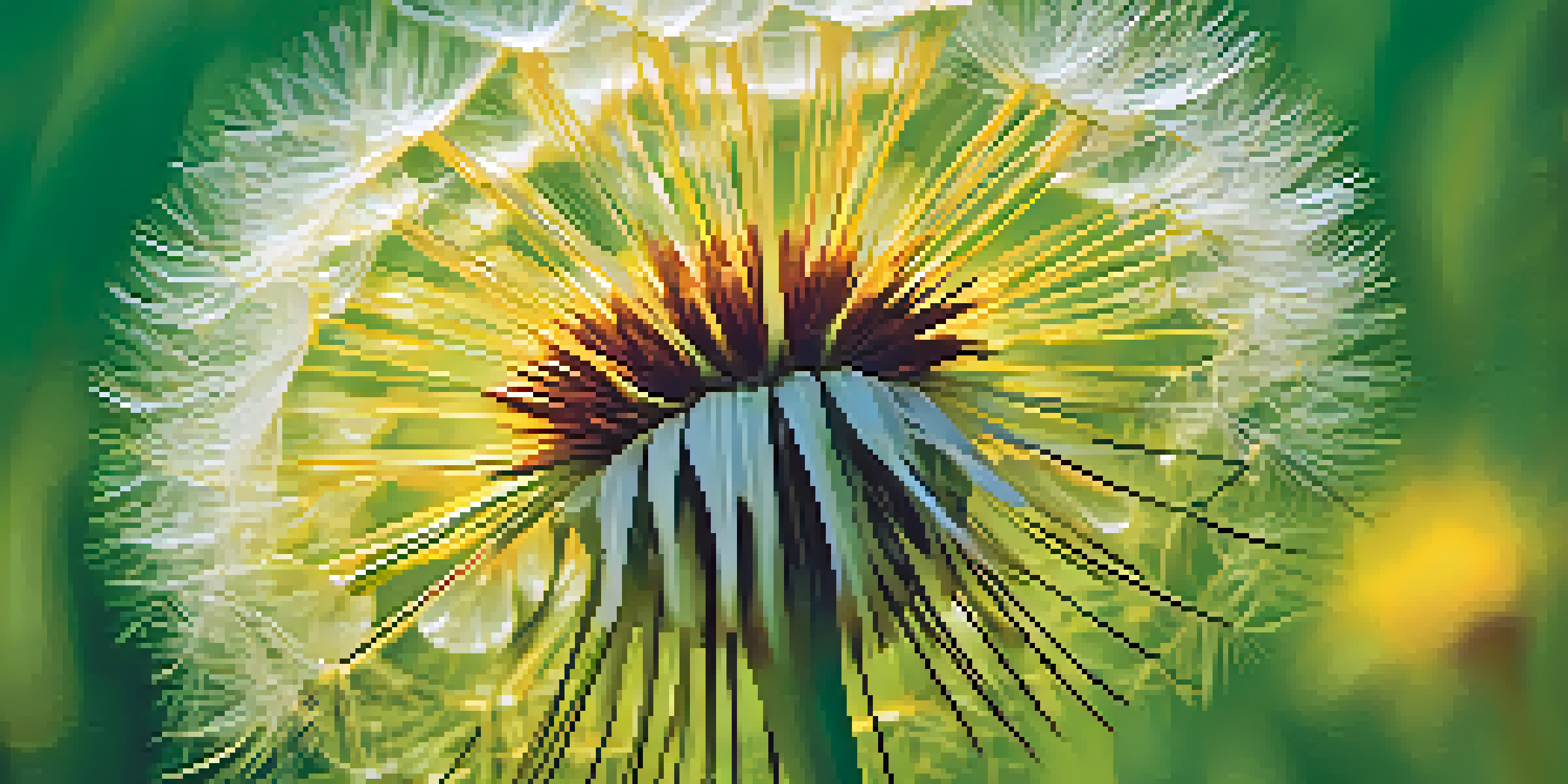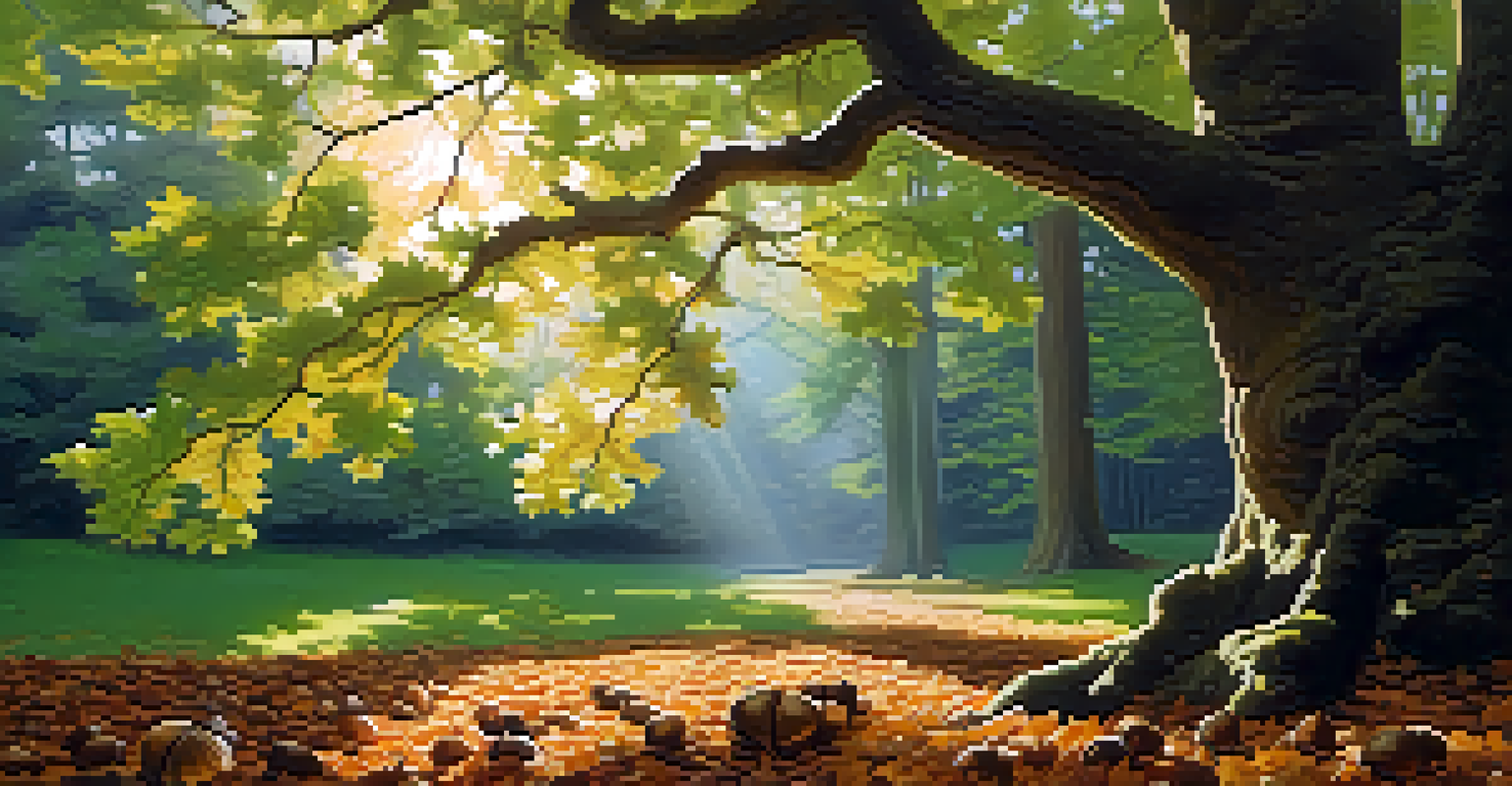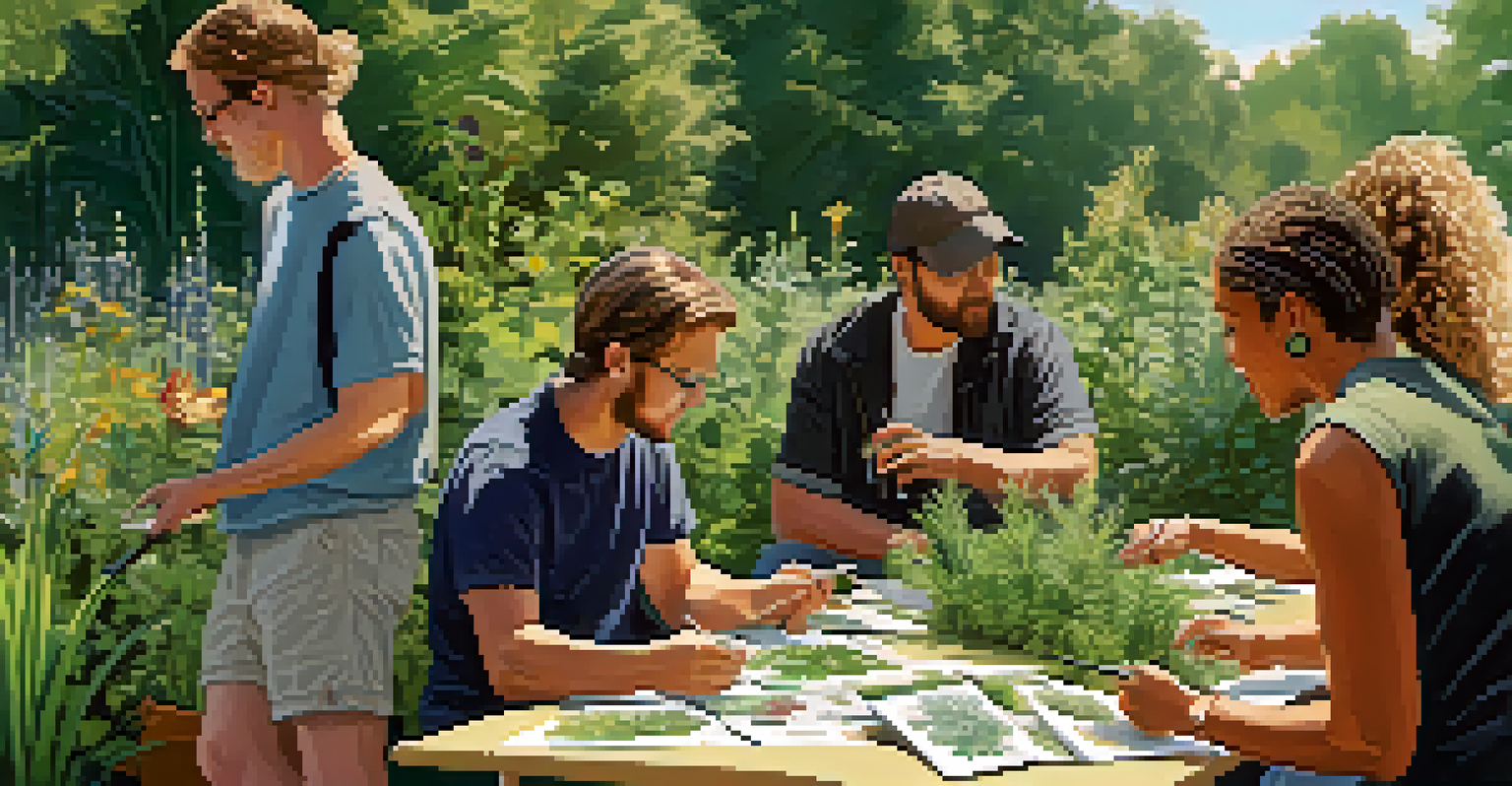Exploring Local Flora: A Guide to Identifying Common Plants

Understanding the Importance of Local Flora Identification
Identifying local plants is more than just a fun hobby; it’s an essential skill that connects us to nature. Knowing the flora around us helps us appreciate the biodiversity in our environment. It can also aid in foraging, gardening, and understanding ecosystems.
In every walk with nature one receives far more than he seeks.
When we recognize local plants, we become more aware of their roles in our ecosystem. For example, many plants support pollinators, while others may serve as food sources for wildlife. By learning their names and characteristics, we contribute to conservation efforts.
Moreover, familiarizing ourselves with local plants can enhance our outdoor experiences. Whether hiking, camping, or simply enjoying a walk in the park, identifying flora adds another layer of engagement and appreciation for our surroundings.
Getting Started: Basic Tools for Plant Identification
Before diving into plant identification, having the right tools makes the process smoother. A good field guide tailored to your region can provide essential information on identifying local flora. Additionally, a magnifying glass can help you examine leaves, flowers, and other details more closely.

A smartphone with plant identification apps can also be a great asset. Apps like PlantSnap or PictureThis allow you to take photos and get instant feedback on what you’ve found. This combination of traditional and modern methods can enhance your learning experience.
Importance of Local Flora Knowledge
Identifying local plants enhances our connection to nature and supports biodiversity conservation.
Don’t forget a notebook or digital device to jot down your observations! Documenting your findings helps reinforce your memory and can serve as a personal botanical journal as you progress in your plant identification journey.
Key Characteristics to Observe in Plants
When identifying plants, there are several key characteristics to observe. Start with the leaves: their shape, size, and arrangement can offer significant clues. For instance, broad, flat leaves might indicate a deciduous tree, while needle-like leaves are common in conifers.
To forget how to dig the earth and to tend the soil is to forget ourselves.
Next, take note of the flowers and fruits, if present. The color, size, and arrangement of flowers can be distinguishing features. For example, if you see clusters of small white flowers, you might be looking at elderberry or wild carrot.
Finally, consider the plant's habitat. Is it growing in a wetland, a dry hillside, or a shady forest? The environment can greatly influence which species you might encounter, helping you narrow down your options.
Common Local Plants to Know and Recognize
Some plants are ubiquitous in many regions and serve as great starting points for beginners. Dandelions, for instance, are often the first flowers to bloom in spring, recognizable by their bright yellow heads. They are not only beautiful but also edible, making them a great plant to learn about.
Another common plant is the clover, with its trifoliate leaves and small white or pink flowers. Clover is often found in lawns and fields and is known for attracting bees. Learning to identify these plants can build your confidence as you explore more varieties.
Essential Tools for Identification
Using field guides, apps, and notebooks can significantly improve your plant identification skills.
Lastly, consider the iconic oak tree. With its lobed leaves and acorns, the oak is not just a majestic presence in parks but also a vital part of many local ecosystems. Recognizing these common plants can serve as a foundation for exploring more diverse flora.
Seasonal Changes: How Flora Transforms Over Time
One of the fascinating aspects of plants is how they change with the seasons. In spring, many plants bloom, showcasing vibrant colors and attracting pollinators. Observing these transformations can deepen your appreciation for the life cycles in your local environment.
As summer approaches, some plants may grow taller and produce fruits or seeds. This is a great time to observe how different species adapt to warmer weather. For example, sunflowers stretch towards the sun, while other plants may wilt under the heat.
In fall, many plants prepare for winter by shedding leaves or going dormant. Learning to identify these seasonal changes not only helps in recognizing plants year-round but also provides insight into their survival strategies in varying climates.
Engaging with Your Community: Plant Walks and Workshops
Joining a local plant identification group or participating in community workshops can enhance your learning experience. Many communities offer guided plant walks where you can learn from experts while enjoying nature. These events provide a great opportunity to ask questions and share your observations.
Additionally, online forums and social media groups can connect you with fellow plant enthusiasts. Sharing photos and information about local flora can be both inspiring and educational, creating a sense of community focused on nature.
Seasonal Changes in Flora
Observing how plants transform with the seasons deepens our appreciation for their life cycles and adaptations.
Consider volunteering for local conservation projects as well. Working alongside others who share your passion for plants can deepen your knowledge and foster friendships. Plus, you’ll be contributing to the preservation of your local ecosystem.
The Joy of Plant Identification: Making it a Habit
Ultimately, the joy of identifying plants lies not just in the knowledge gained but in the experiences shared. Make it a habit to explore your surroundings with curiosity. Whether it’s a walk in the park or a hike in the woods, take the time to observe the plants you encounter.
Set small goals, such as identifying one new plant each week. This approach makes learning manageable and rewarding. Plus, each new plant can spark stories and discussions, enriching your understanding of the natural world.

Remember, plant identification is a lifelong journey. With each plant you learn, you’ll uncover more about the intricate relationships within ecosystems, helping you foster a deeper connection to the environment around you.